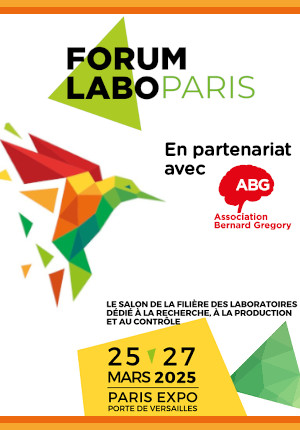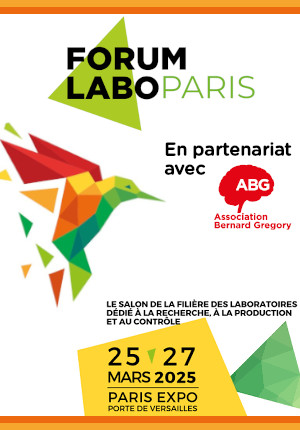Analyse de mesures in situ à haute résolution spatiale et temporelle de processus de couche limite turbulente sous le vent catabatique sur pente alpine dans les massifs autrichiens de la région d'Innsbruck // Analysis of in situ high resolved measurements
|
ABG-128819
ADUM-61996 |
Thesis topic | |
| 2025-02-22 | Public funding alone (i.e. government, region, European, international organization research grant) |
Université Grenoble Alpes
Grenoble cedex 9 - France
Analyse de mesures in situ à haute résolution spatiale et temporelle de processus de couche limite turbulente sous le vent catabatique sur pente alpine dans les massifs autrichiens de la région d'Innsbruck // Analysis of in situ high resolved measurements
- Earth, universe, space sciences
vents catabatiques sur pentes fortes, couche limite atmosphérique stratifiée stablement, mélange turbulent, écoulements gravitaires, expérimentation in situ, modélisation numérique LES
katabatic winds along a steep slope, stably stratified atmospheric boundary layer, turbulent mixing, gravity flow, in situ measurements, LES numerical modeling
katabatic winds along a steep slope, stably stratified atmospheric boundary layer, turbulent mixing, gravity flow, in situ measurements, LES numerical modeling
Topic description
Les vents catabatiques sont des écoulements gravitaires générés en particulier la nuit par le refroidissement radiatif en surface terrestre. Ils sont principalement observés en hiver lors d'épisodes météorologiques anticycloniques associés à une stratification stable et à une inversion de température dans la basse troposphère. Bien que leur intensité soit relativement faible (autour de 2 à 4 m/s) sauf sur d'autres atmosphères planétaires comme celles de Mars où ils atteignent des vitesses de l'ordre de 10 à 20 m/s (Newman JGR 2022), leur rôle est primordial dans les zones de relief complexe car ils participent de manière systématique à l'accumulation de polluants en fond de vallée et contribuent directement à la génération de ‘cold air pool'. Il existe un grand nombre d'observations in situ du processus catabatique le long de pentes faibles (1° à 10°) telles que celles rapportées dans les vallées ou les glaciers (voir par exemple Denby JAM 2020, Grachev BLM 2016), mais beaucoup moins le long de pentes alpines fortes (20° à 40°) dans les montagnes (voir par exemple Nadeau BLM 2013, Charrondière BLM 2022 [3]). Le vent catabatique se compose d'un jet de paroi turbulent le long de la pente couplé à une couche limite thermique turbulente refroidie en surface, tous deux soumis aux effets de la gravité.
Une approche classique du couplage est donnée par le modèle de Prandtl (1942), qui inclut également les effets turbulents (Grisogono JAS 2001), mais on sait peu de choses sur la région d'écoulement très proche en dessous de la vitesse maximale du jet en particulier pour les configurations à forte pente (Oldroyd BLM 2016).
La question de recherche traitée est double, d'une part approfondir la connaissance générale des propriétés turbulentes des vents catabatiques dans la zone très proche de la surface rarement observée in situ pour des raisons techniques et logistiques (échelles millimétriques peu accessibles avec des sondes classiques météorologiques) en adaptant in situ des sondes de mesures de vitesse 3D à haute résolution en fréquence et de taille réduite (généralement utilisées en soufflerie au laboratoire), d'autre part proposer et valider un ensemble de lois de parois nécessaires à la définition cohérente des conditions aux limites de surface pour une utilisation appropriée des modèles régionaux en montagne et sur les reliefs complexes en général (par exemple Meso-NH, SURFEX au CNRM Météo France).
L'analyse sera faite sur la base d'une campagne d'observation prévue dans le cadre du projet alpin européen TeamX en 2024-2026 dans les alpes autrichiennes près d'Innsbruck.
------------------------------------------------------------------------------------------------------------------------------------------------------------------------
------------------------------------------------------------------------------------------------------------------------------------------------------------------------
Katabatic winds are gravity flows generated in particular at night by radiative cooling at the Earth's surface. They are mainly observed in winter during anticyclonic weather episodes associated with stable stratification and temperature inversion in the lower troposphere. Although their intensity is relatively low (around 2 to 4 m/s), except over other planetary atmospheres such as those of Mars where they reach speeds of around 10 to 20 m/s (Newman JGR 2022), their role is crucial in areas of complex relief, as they systematically contribute to the accumulation of pollutants at the bottom of valleys and directly contribute to the generation of cold air pools. There are a large number of in situ observations of the katabatic process along gentle slopes (1° to 10°) such as those reported in valleys or glaciers (see for example Denby JAM 2020, Grachev BLM 2016), but much less so along steep alpine slopes (20° to 40°) in the mountains (see for example Nadeau BLM 2013, Charrondière BLM 2022 [3]). The katabatic wind consists of a turbulent wall jet along the slope coupled to a turbulent thermal boundary layer cooled at the surface, both subject to the effects of gravity.
A classical approach to coupling is given by Prandtl's (1942) model, which also includes turbulent effects (Grisogono JAS 2001), but little is known about the region of flow below the jet's maximum velocity very close to the surface, in particular for steep-slope configurations (Oldroyd BLM 2016).
The research question addressed is twofold: on the one hand, to improve general knowledge of the turbulent properties of katabatic winds in the region very close to the surface, which is rarely observed in situ for technical and logistical reasons (millimetre scales not easily accessible with conventional meteorological probes), by adapting in situ 3D velocity measurement probes with high frequency resolution and small size (generally used in wind tunnels in the laboratory), secondly, to propose and validate a set of wall laws necessary for the coherent definition of surface boundary conditions for the appropriate use of regional models in the mountains and on complex reliefs in general (e.g. Meso-NH, SURFEX at the CNRM Météo France).
The analysis will be based on an ongoing observation campaign as part of the TeamX European alpine project in 2024-2026 in the Austrian Alps near Innsbruck.
------------------------------------------------------------------------------------------------------------------------------------------------------------------------
------------------------------------------------------------------------------------------------------------------------------------------------------------------------
Début de la thèse : 01/10/2025
WEB : https://www.teamx-programme.org/projects/CoCaInn/
Une approche classique du couplage est donnée par le modèle de Prandtl (1942), qui inclut également les effets turbulents (Grisogono JAS 2001), mais on sait peu de choses sur la région d'écoulement très proche en dessous de la vitesse maximale du jet en particulier pour les configurations à forte pente (Oldroyd BLM 2016).
La question de recherche traitée est double, d'une part approfondir la connaissance générale des propriétés turbulentes des vents catabatiques dans la zone très proche de la surface rarement observée in situ pour des raisons techniques et logistiques (échelles millimétriques peu accessibles avec des sondes classiques météorologiques) en adaptant in situ des sondes de mesures de vitesse 3D à haute résolution en fréquence et de taille réduite (généralement utilisées en soufflerie au laboratoire), d'autre part proposer et valider un ensemble de lois de parois nécessaires à la définition cohérente des conditions aux limites de surface pour une utilisation appropriée des modèles régionaux en montagne et sur les reliefs complexes en général (par exemple Meso-NH, SURFEX au CNRM Météo France).
L'analyse sera faite sur la base d'une campagne d'observation prévue dans le cadre du projet alpin européen TeamX en 2024-2026 dans les alpes autrichiennes près d'Innsbruck.
------------------------------------------------------------------------------------------------------------------------------------------------------------------------
------------------------------------------------------------------------------------------------------------------------------------------------------------------------
Katabatic winds are gravity flows generated in particular at night by radiative cooling at the Earth's surface. They are mainly observed in winter during anticyclonic weather episodes associated with stable stratification and temperature inversion in the lower troposphere. Although their intensity is relatively low (around 2 to 4 m/s), except over other planetary atmospheres such as those of Mars where they reach speeds of around 10 to 20 m/s (Newman JGR 2022), their role is crucial in areas of complex relief, as they systematically contribute to the accumulation of pollutants at the bottom of valleys and directly contribute to the generation of cold air pools. There are a large number of in situ observations of the katabatic process along gentle slopes (1° to 10°) such as those reported in valleys or glaciers (see for example Denby JAM 2020, Grachev BLM 2016), but much less so along steep alpine slopes (20° to 40°) in the mountains (see for example Nadeau BLM 2013, Charrondière BLM 2022 [3]). The katabatic wind consists of a turbulent wall jet along the slope coupled to a turbulent thermal boundary layer cooled at the surface, both subject to the effects of gravity.
A classical approach to coupling is given by Prandtl's (1942) model, which also includes turbulent effects (Grisogono JAS 2001), but little is known about the region of flow below the jet's maximum velocity very close to the surface, in particular for steep-slope configurations (Oldroyd BLM 2016).
The research question addressed is twofold: on the one hand, to improve general knowledge of the turbulent properties of katabatic winds in the region very close to the surface, which is rarely observed in situ for technical and logistical reasons (millimetre scales not easily accessible with conventional meteorological probes), by adapting in situ 3D velocity measurement probes with high frequency resolution and small size (generally used in wind tunnels in the laboratory), secondly, to propose and validate a set of wall laws necessary for the coherent definition of surface boundary conditions for the appropriate use of regional models in the mountains and on complex reliefs in general (e.g. Meso-NH, SURFEX at the CNRM Météo France).
The analysis will be based on an ongoing observation campaign as part of the TeamX European alpine project in 2024-2026 in the Austrian Alps near Innsbruck.
------------------------------------------------------------------------------------------------------------------------------------------------------------------------
------------------------------------------------------------------------------------------------------------------------------------------------------------------------
Début de la thèse : 01/10/2025
WEB : https://www.teamx-programme.org/projects/CoCaInn/
Funding category
Public funding alone (i.e. government, region, European, international organization research grant)
Funding further details
Concours pour un contrat doctoral
Presentation of host institution and host laboratory
Université Grenoble Alpes
Institution awarding doctoral degree
Université Grenoble Alpes
Graduate school
105 STEP - Sciences de la Terre de l'Environnement et des Planètes
Candidate's profile
Le/la doctorant.e recruté.e sur les 3 ans de projet aura une formation en géophysique de l'atmosphère et/ou mécanique des fluides et sera chargé.e de l'analyse de mesures in situ des épisodes de vent catabatiques sur les pentes alpines autrichiennes issues de la campagne collaborative de l'hiver 2025. Il/elle aura également une expertise sur les propriétés de la turbulence dans les fluides.
The PhD student recruited for the 3-year project will have a background in atmospheric geophysics and/or fluid mechanics and will be responsible for the analysis of in situ measurements of katabatic wind events on the Austrian Alpine slopes during the collaborative campaign in winter 2025. He will also have expertise in the properties of turbulence in fluids.
The PhD student recruited for the 3-year project will have a background in atmospheric geophysics and/or fluid mechanics and will be responsible for the analysis of in situ measurements of katabatic wind events on the Austrian Alpine slopes during the collaborative campaign in winter 2025. He will also have expertise in the properties of turbulence in fluids.
2025-05-05
Apply
Close
Vous avez déjà un compte ?
Nouvel utilisateur ?
More information about ABG?
Get ABG’s monthly newsletters including news, job offers, grants & fellowships and a selection of relevant events…
Discover our members
 Aérocentre, Pôle d'excellence régional
Aérocentre, Pôle d'excellence régional  Institut de Radioprotection et de Sureté Nucléaire - IRSN - Siège
Institut de Radioprotection et de Sureté Nucléaire - IRSN - Siège  MabDesign
MabDesign  Ifremer
Ifremer  ONERA - The French Aerospace Lab
ONERA - The French Aerospace Lab  CESI
CESI  Groupe AFNOR - Association française de normalisation
Groupe AFNOR - Association française de normalisation  MabDesign
MabDesign  ADEME
ADEME  ANRT
ANRT  Nokia Bell Labs France
Nokia Bell Labs France  Généthon
Généthon  Laboratoire National de Métrologie et d'Essais - LNE
Laboratoire National de Métrologie et d'Essais - LNE  PhDOOC
PhDOOC  Tecknowmetrix
Tecknowmetrix  Institut Sup'biotech de Paris
Institut Sup'biotech de Paris  TotalEnergies
TotalEnergies  CASDEN
CASDEN  SUEZ
SUEZ










